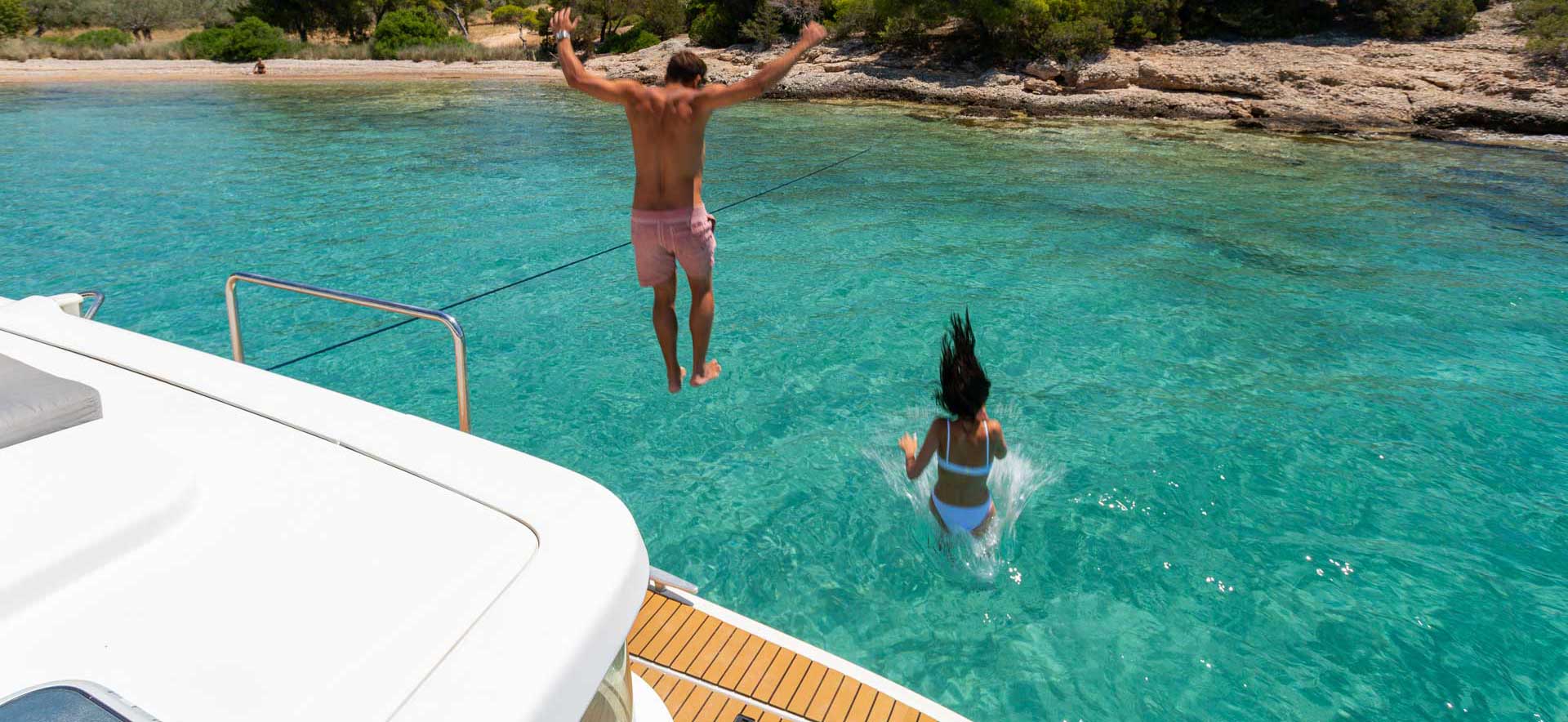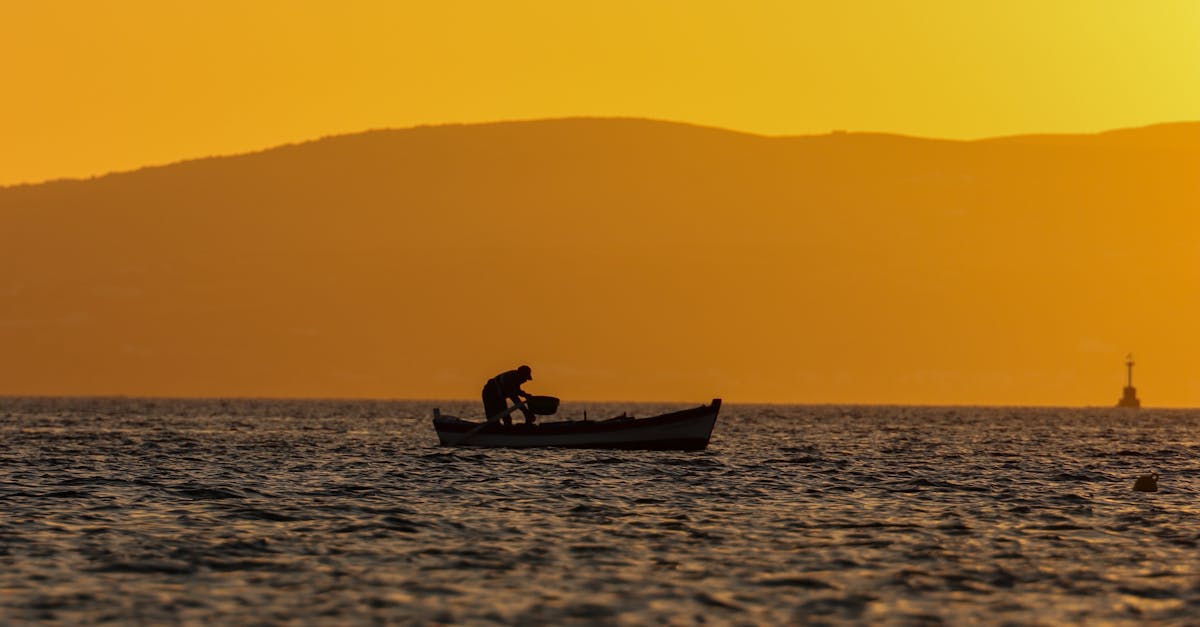Best Time to Visit Milos: A Local’s Guide
You might be surprised by the best time to visit Milos. This emerging Greek gem is a chance to experience something special in every season. Santorini and Mykonos may get all the attention, but Milos is gaining faster recognition as one of the most beautiful Cycladic islands. Its 80 beaches showcase pristine crystal-clear waters.
Milos stands as the fifth largest Cycladic island and keeps its authentic charm. The island's economy doesn't rely only on tourism, which helps preserve its character. Spring months from March to May and autumn from September to November bring pleasant temperatures with fewer tourists. Summer visits work best in June when you'll find perfect weather, better prices, and empty beaches. The strong Aegean winds arrive in July.
This complete guide walks you through each season in Milos. You'll learn which time matches your priorities and travel style best.
Milos Weather Patterns: Understanding the Seasons
Milos showcases a classic Mediterranean climate that gives the island its unique character through the seasons. The weather patterns play a vital role in planning your trip to this volcanic Cycladic gem.
Mediterranean climate characteristics
The island follows typical Mediterranean weather with mild, rainy winters and warm, sunny summers. You'll find sunshine here over 300 days annually, which makes Milos bright throughout the year. The Köppen system classifies the climate as "Csa" (Mediterranean hot summer climate).
The island's position in the Aegean sets it apart from mainland Greece by creating milder temperatures. Daily averages range from 11°C (52°F) in January and February to 26.5°C (79.5°F) in July and August. Sunshine varies greatly between seasons - July bathes the island in 14 hours of daily sunshine while December sees just 4 hours.
Impact of meltemia winds (July-August)
The meltemi wind system stands out as the biggest weather factor for travelers to Milos. These northerly winds, which ancient mariners called Etesian winds, sweep through the island from June through September and peak during July and August.
Starting around late May until October, the meltemi brings both challenges and benefits. These winds cool down hot summer days naturally and cut through humidity while making visibility better. Many visitors welcome this relief from intense summer heat.
Notwithstanding that, these winds can affect your travel plans by a lot. They usually pick up around mid-afternoon at 4-5 Beaufort (11-21 knots) and calm down at sunset. The winds can strengthen to 5-7 Beaufort (17-33 knots) during July and August and last several days straight.
Beach lovers should plan ahead - southern (leeward) beaches provide better shelter on windy days. Keep in mind that boat tours and water activities might need rescheduling during stronger winds, especially when you have peak season visits.
Rainfall patterns and temperature ranges
The island experiences clear wet and dry seasons. Rain follows Mediterranean patterns and falls mostly between October and March. Yearly rainfall reaches approximately 400mm (15.7 inches). December gets the most rain at about 90mm (3.54").
Summer brings an almost completely dry spell from June through August. July tops the list as the driest month with practically no rain.
Sea temperatures move predictably from 16°C (60.8°F) in winter to 25°C (77°F) in August. The water feels great for swimming from June through October. August offers the warmest waters - perfect for spending lots of time in the sea.
The shoulder seasons give you the best mix of warm temperatures without extreme heat or rain. The sea stays warm through September and October, and the strong meltemi winds start calming down after August.
Spring in Milos (March-May): Nature's Awakening
Spring breathes new life into Milos island with its bright colors and perfect weather. This makes it one of the best times to visit Milos if you want real island experiences without summer tourist crowds. The island wakes up from its winter sleep and turns into a green paradise that gives visitors something special each season.
March: Early blooms and quiet learning
The first signs of spring show up in March as temperatures climb to around 15°C (59°F). Rain starts to ease up compared to winter, but you'll still see about 56mm (2.2") of rain spread over a week. This mix of sun and rain helps wildflowers cover the hills.
Nature comes alive in March when flowers start their colorful show. You get about 12 hours of daylight and 6.5 hours of sunshine - plenty of time to see everything. The sea sits at 15.5°C (60.6°F). That's too cold for most swimmers but creates amazing shots for photographers who want to capture blue waters against spring greenery.
March stays quiet since tourists haven't arrived yet. You can take your time at Milos' famous spots, like the moon-like Sarakiniko Beach, without any crowds getting in your way.
April: Perfect hiking weather and Easter celebrations
The weather gets better in April. Temperatures rise to 19°C (66.2°F) during the day and drop to 13°C (55.4°F) at night. Rain becomes rare with just 25mm (0.98") over 5 days. These conditions make outdoor activities a joy.
April stands out as the best time for hiking in Milos Greece. The trails show off amazing views with wildflowers dotting the hillsides. Daylight stretches to 13 hours and 9 minutes with 8.5 hours of sunshine. This gives you lots of time to check out the island's volcanic landscape.
Greek Orthodox Easter often falls in April, making it a magical time on the island. The celebration starts with Holy Week and ends with Easter Sunday. Milos has its own special Easter traditions:
- Plaka's locals act out Christ's Redemption, showing Jesus coming down from the cross
- The "burning of Judas" happens at midnight when locals burn a dressed-up scarecrow
- The villages of Triovasalos and Pera Triovasalos keep their exciting "gunpowder" tradition alive
Easter in Milos shows you island traditions that locals have kept alive for generations.
May: Perfect mix of warmth and peace
May hits the sweet spot in the Milos travel guide calendar. Days warm up to 24°C (75°F) while nights stay comfortable at 15-16°C (59-61°F). Rain almost disappears with just 13-15mm (0.5-0.6") falling over a day or two[112].
The sea warms to about 18.5°C (65°F). This makes swimming fun for people who don't mind cooler water. You get 9.5-10 hours of sunshine each day, and daylight lasts 14 hours and 10 minutes. That's plenty of time to discover all the things to do in Milos.
The island stays relatively quiet in May compared to summer months. Everything stays green, but it's warm enough for beach time without July and August's intense heat.
Yes, it is easy to see why many travelers pick May as their favorite time to visit Milos. You get nice temperatures, almost no rain, and fewer tourists - the perfect Greek island experience without summer's downsides.
Summer in Milos (June-August): Peak Season Experience

Summer turns Milos into a lively paradise. Visitors from around the world come to see its crystal-clear waters and dramatic landscapes. The island shows its true beauty as temperatures climb, giving visitors a unique experience compared to other seasons.
June: Early summer sweet spot
June gives you the best introduction to Milos' summer season. The weather hits sweet spots with average temperatures of 24.5°C (76.1°F) and highs of 28.7°C (83.7°F). These conditions let you explore the island comfortably. The sea reaches a nice 21.8°C (71.2°F), making swimming more enjoyable.
The island starts buzzing with energy in June but stays less crowded than peak months. You'll find most restaurants and accommodations open with reasonable prices. The days stretch long with 14 hours and 40 minutes of daylight. About 11 hours of sunshine help you find all the island's hidden gems.
July-August: Full tourist season and warmest waters
Peak season hits Milos in July and August. The island sees its highest temperatures and biggest crowds then. July brings average temperatures of 26.5°C (79.7°F), while August stays close at 26.6°C (79.9°F). The sea feels perfect in August at 24.9°C (76.8°F), making it great for long swims.
The famous meltemi winds show up most afternoons. These north winds help cool things down but might affect your boat schedules and beach time. The southern shores give you better shelter on windy days.
August packs the island to its limits. Local tourism peaks and accommodation prices reach their highest. You'll need to book everything ahead during these months.
Beach accessibility and boat tour availability
Summer gives you the best chance to enjoy Milos' 75+ beaches. These range from sandy shores to dramatic rock formations. Popular spots like Sarakiniko, Tsigrado, and Firiplaka buzz with activity.
Boat tours run at full capacity in summer. You'll need them to see some of Milos' most beautiful spots. Places like Kleftiko and Gerakas stay hidden unless you go by sea. These trips show you stunning coastlines, secret caves, and remote beaches that make the island special.
Book your boat tours early. They sell out fast in peak season. Many travelers say Polco Sailing offers great trips to Kleftiko and nearby islands like Kimolos and Poliegos.
Fall in Milos (September-November): Extended Summer

Image Source: https://pexels.com/
Milos reveals its hidden charm during fall when summer crowds leave and prices drop. The island shows its true character while keeping the perfect weather and swimming spots ready.
September: The insider's favorite month
September shines as the sweet spot in the Milos travel guide calendar. The temperature sits comfortably at 23.9°C (75°F), giving you warm days without summer's scorching heat. The sea stays warm at 24°C (75.5°F), making it perfect to spend hours at Milos' beautiful beaches.
Beach lovers can enjoy about 9.5 hours of sunshine each day, with humidity staying around 66%. Locals call September their best month because the island keeps its summer magic with fewer tourists around.
October: Last chance for warm swims
The weather starts to shift in October as temperatures ease to a pleasant 20.2°C (68°F). The sea holds onto its warmth at 22°C (72°F), so swimming stays enjoyable all month long.
The water feels great between 20°C and 23°C (68°F to 73°F), especially during early October. Rain shows up occasionally, about 30mm over just two days, but rarely ruins any plans.
Most places stay open, and prices drop by about 30% compared to peak season. This makes October a great time to get more value for your money.
November: Transition to quieter times
November brings the real off-season feel. The mercury drops to 16°C (61°F), reaching highs of 18.5°C (65.3°F). Swimming becomes a bit chilly as sea temperatures cool to 19.5°C (67.5°F).
Rain picks up to about 60mm over six days. Daylight shrinks to 10 hours with 5.5 hours of sunshine.
The island shifts to its local pace as tourist spots start closing down. Budget travelers who don't mind fewer activities will find amazing deals at the few open hotels. This month gives you a real taste of everyday life in Milos.
Flexible travelers looking to save money might find November's different vibe worth exploring.
Winter in Milos (December-February): The Hidden Season
Milos in winter shows you a completely different island. Life slows down to its natural pace, and peaceful solitude takes over. The island reveals its true character when tourists leave and locals take back their home.
What remains open during winter months
Winter turns Milos into a quieter place. Tourist activities drop to basic levels. The port town of Adamas stays lively with local cafes and tavernas that serve warming Greek dishes. Dana's Place and the seaside snack bar are the only restaurants open in Pollonia. You'll still find gyros shops, hotel snack bars, coffee spots, supermarkets, and bakeries running as usual in Adamas. Museums and archeological sites stay open and give you a more personal experience without the summer crowds.
Winter weather realities and transportation limitations
The winter brings mild but sometimes tough weather. The temperature usually stays between 10°C and 15°C (50°F to 59°F). January is the coldest month with an average of 11°C. December gets about 90mm of rain spread over 10 days. The wind blows often and can be strong, making it feel colder than it is.
Ferry services run less often. The temperature can sometimes drop really low - it hit -2°C in February 1976 and February 2004. The sea temperature drops to 16°C in January, which makes swimming tough. The island's rugged landscapes and historical sites still make great spots to explore comfortably.
Authentic local experiences and dramatically reduced prices
Winter travelers can save money. Hotel prices drop a lot, and January offers some of the best deals. The average hotel rate falls from summer's peak of $308. This makes luxury stays more available to budget travelers.
The island shows its most authentic side in winter. Locals go about their daily lives without tourist crowds. Nature's beauty stays untouched. These conditions make perfect opportunities for photographers and people looking for peace and quiet.
Swimming and sunbathing might not work well this time of year. But travelers who love local culture, dramatic scenery, and great deals will see a side of Milos Greece that summer visitors miss completely.
Conclusion
Learning about Milos through all four seasons shows how timing shapes your island experience. Spring and fall emerge as the sweet spots that offer pleasant temperatures and fewer crowds. June stands out as the ideal early summer month before July and August bring peak crowds and strong meltemia winds.
Weather patterns play a significant role in planning your visit. Summer delivers guaranteed sunshine but comes with higher prices and busy beaches. Fall extends summer's warmth without the crowds, while winter reveals authentic island life at substantially lower costs.
Your perfect time to visit Milos depends on your priorities. Beach lovers should target June or September, and photographers might prefer spring's wildflowers or winter's dramatic skies. Budget travelers will find excellent value during shoulder seasons with comfortable temperatures and reasonable accommodation rates.
Each season brings its own magic to this Cycladic gem. Milos rewards visitors with stunning landscapes and unforgettable experiences throughout the year, whether you choose peak summer energy or winter's peaceful solitude.
FAQs
Q1. What is the best time to visit Milos?
The best time to visit Milos is during the shoulder seasons of spring (April-May) and fall (September-October). These months offer pleasant temperatures, fewer crowds, and lower prices while still allowing for beach activities and exploration.
Q2. How many days should I spend in Milos?
A stay of 4-5 days is ideal for fully experiencing Milos. This allows time to explore beautiful beaches, visit charming villages, enjoy boat tours, and discover the island's unique landscapes and attractions.
Q3. What's the most effective way to get around Milos?
Renting a car, ATV, or scooter is the best way to explore Milos. These options provide flexibility to visit remote beaches and attractions. For coastal exploration, joining boat tours is highly recommended to access secluded coves and caves.
Q4. Are there any unique local experiences in Milos?
Yes, Milos offers several unique experiences. These include exploring the moon-like landscape of Sarakiniko Beach, visiting traditional fishing villages, touring abandoned sulfur mines, and witnessing authentic Greek Easter celebrations if visiting in spring.
Q5. What should I consider when planning beach visits in Milos?
When planning beach visits in Milos, consider the wind direction. Northerly winds make southern beaches more suitable, while southerly winds favor northern beaches. Using weather apps to check wind patterns can help you choose the most comfortable beach for the day.
